Rubber duck physics
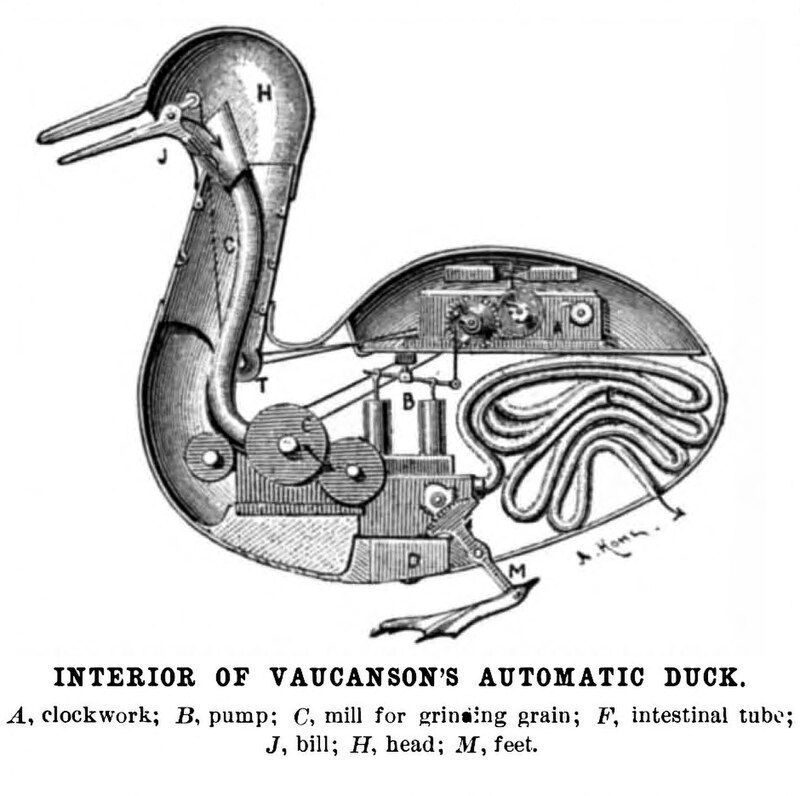
https://player.vimeo.com/video/14904318
physics is about models and is it good enough?
ACTUAL science
Container spill - ocean currents
On January 10, 1992, a storm at sea in the Pacific set in motion one of the largest and most unusual studies into global ocean currents. A freighter traveling from China to America was caught up in the storm, which tipped the vessel into what I like to call the Uh-Oh Zone. The less than favorable maneuver saw several shipping containers unceremoniously dumped into the waters, one of which contained a consignment of 28,800 bath toys.
28,000 Rubber Ducks Accidentally Embarked On An Epic Ocean Current Study In 1992 | IFLScience

Glacial run off with
https://porhomme.com/2008/09/wtf-scientists-use-rubber-ducks-to-understand-global-warming/
Wildlife counting challenge (lifelike ducks)
Developmental science
The first rubber ducks didn’t even float: they were cast solid and intended as chew toys. By the 1940s, rubber ducks developed into the iconic floating yellow figure with bright orange bill we recognize today. For many decades, most duck figures have been made of vinyl, but we still call them rubber ducks.
Rubber ducks naturally inspire water play that develops muscle strength and coordination. With their bright color, smooth texture, and (for some) squeaky or quacky sounds, rubber ducks sharpen toddlers’ senses. Their presence in the bathtub soothes youngsters’ fears of water and water immersion and makes good clean fun of the routine hygiene they’re learning.
3.
https://www.dropbox.com/s/8yzjnlv6pur65oe/epn2010413p29.pdf?dl=0
Waves:
 How Computers Work - The Evolution
of Technology
How Computers Work - The Evolution
of Technology
Superposition
Barton’s pendulum
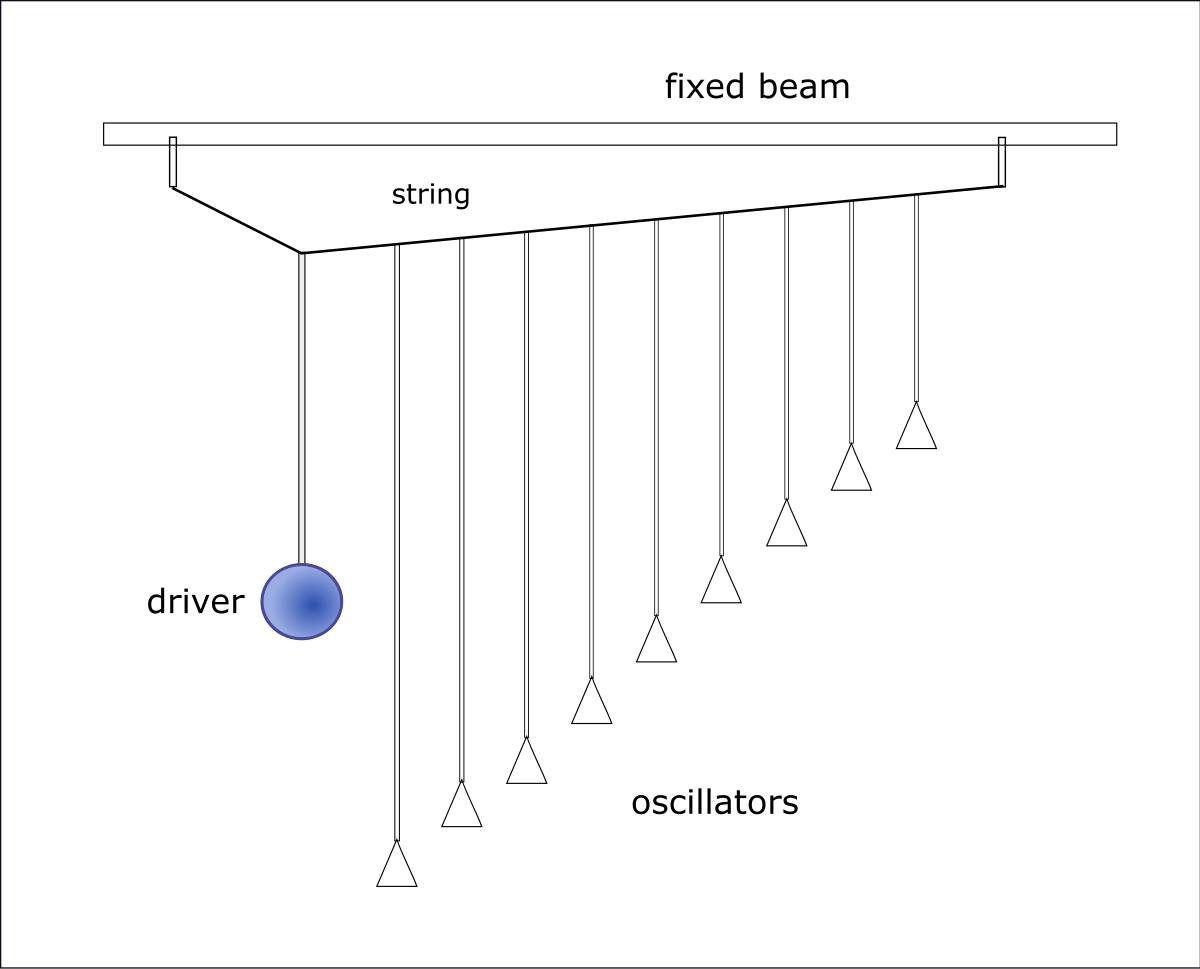 Barton’s
pendulums - Wikipedia
Barton’s
pendulums - Wikipedia
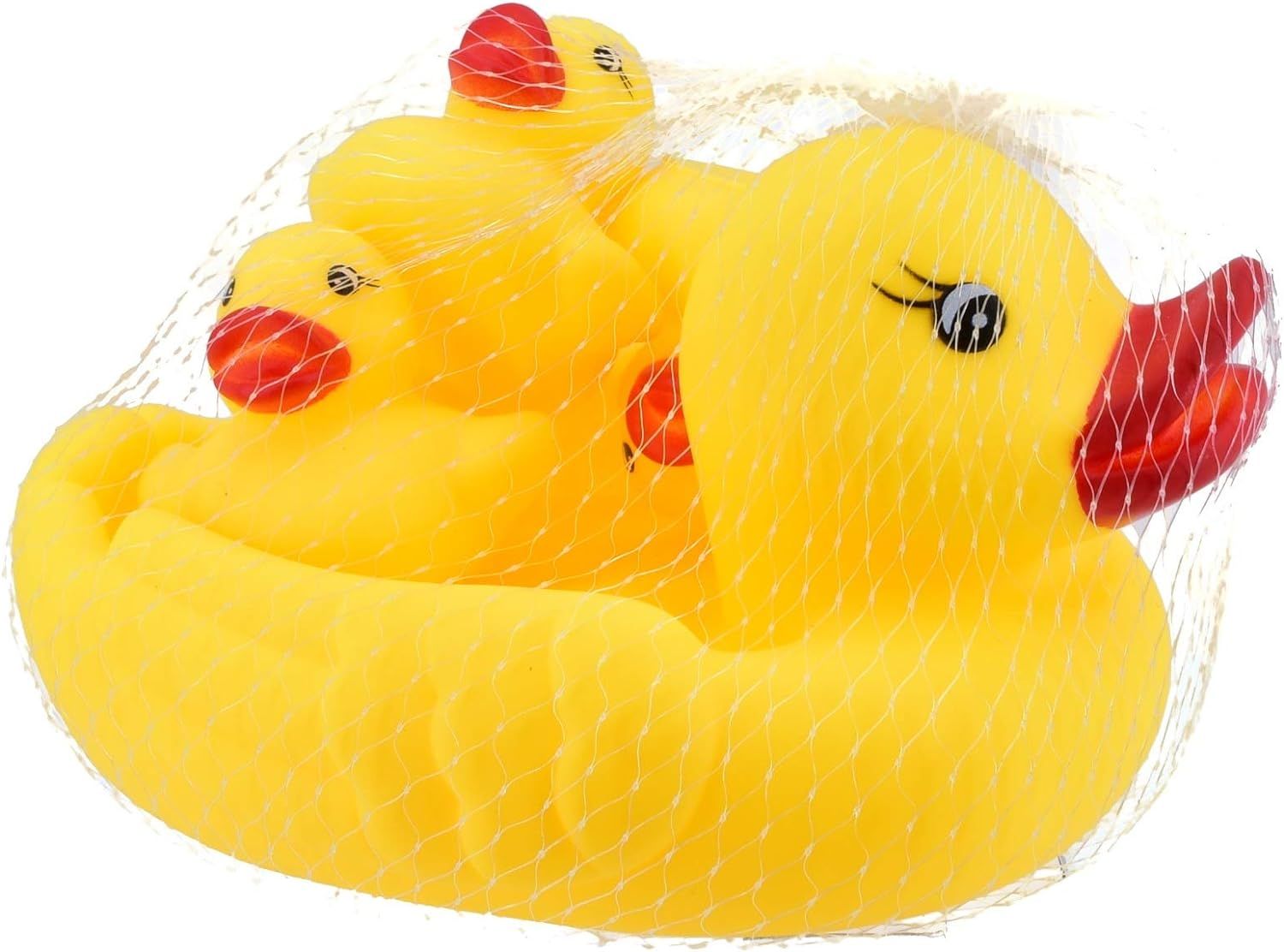 KandyToys
Bathtime Buddies 4 Large Rubber Ducks in Net: Amazon.co.uk: Toys &
Games
KandyToys
Bathtime Buddies 4 Large Rubber Ducks in Net: Amazon.co.uk: Toys &
Games

bouyancy
Doppler
debugging
Rubber Duck Debugging in the Physics classroom
In software engineering, rubber duck debugging is a method of debugging code. The name is a reference to a story in the book The Pragmatic Programmer in which a programmer would carry around a rubber duck and debug their code by forcing themself to explain it, line-by-line, to the duckThe rubber duck debugging method is as follows:
Beg, borrow, steal, buy, fabricate or otherwise obtain a rubber duck (bathtub variety).
Place rubber duck on desk and inform it you are just going to go over some code with it, if that’s all right.
Explain to the duck what your code is supposed to do, and then go into detail and explain your code line by line.
At some point you will tell the duck what you are doing next and then realise that that is not in fact what you are actually doing. The duck will sit there serenely, happy in the knowledge that it has helped you on your way.
Note: In a pinch a coworker might be able to substitute for the duck, however, it is often preferred to confide mistakes to the duck instead of your coworker.
Original Credit: ~Andy from lists.ethernal.org
FAQs
If ducks are so smart, why don’t we just let the ducks do all the work? It would be wonderful if this were true, but the fact is that most ducks prefer to take a mentoring role. There are a few ducks however that do choose to code, but these are the ducks that nobody hears about because they are selected for secret government projects that are highly classified in nature.
Where can I learn more about rubber duck debugging? More information can be found at wikipedia.org, lists.ethernal.org, codinghorror.com, and zenhub.com.
Where can I hire my own duck? Great question! Amazon.com hosts a wide selection of affordable ducks that have graduated with a technical degree from some of the world’s leading universities.
Why does this site exist? As a young intern in 2008 I repeatedly pestered a mentor of mine similar to Kevin’s Rubber Duck Story and eventually my mentor pointed me at the 2002 lists.ethernal.org post by Andy, which paraphrased a story from the 1999 book The Pragmatic Programmer. That night I ordered a rubber duck from Amazon and purchased this domain name as a way of owning up to my behavior.
Salter’s Duck

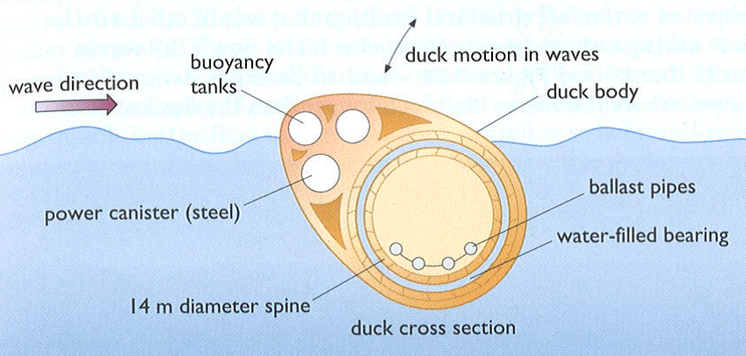 Salter’s
Nodding Duck | Renewable energy
Salter’s
Nodding Duck | Renewable energy
 A wooden duck on a ruler Description automatically generated
A wooden duck on a ruler Description automatically generated
The Waddling Duck is a toy which “walks” down an inclined slope with a forward-backward rocking motion. The toy consists of a body with a body-fixed front leg and freely rotating rear leg, which is hinged to the body.
The toy is modeled with four degrees of freedom: the displacements and rotation of the center of gravity of the body with respect to the inclined slope and the rotation of the rear leg. The rotation of the rear leg is constrained by the front leg and a stop. The legs have an identical (mirrored) shape. The feet have a tread described by a circle segment. Sliding motion is observed in the actual toy. No restitution after impact is observed for the actual toy. The impacts are therefore modeled as completely inelastic.

https://aapt.scitation.org/doi/abs/10.1119/1.1603272
https://www.science20.com/beachcombing_academia/complex_physics_behind_ducks_feet-111023
RHETT ALLAINSCIENCE02.22.2013 08:18 AM
Why Would I Fight a Horse-Sized Duck?
There is a famous question often asked online: Would you rather fight a horse-sized duck or 100 duck-sized horses? For Wired Science blogger Rhett Allain, the answer is the horse-sized duck. Here, Rhett tells you how physics helped him select his adversary.
https://www.wired.com/2013/02/why-would-i-fight-a-horse-sized-duck/
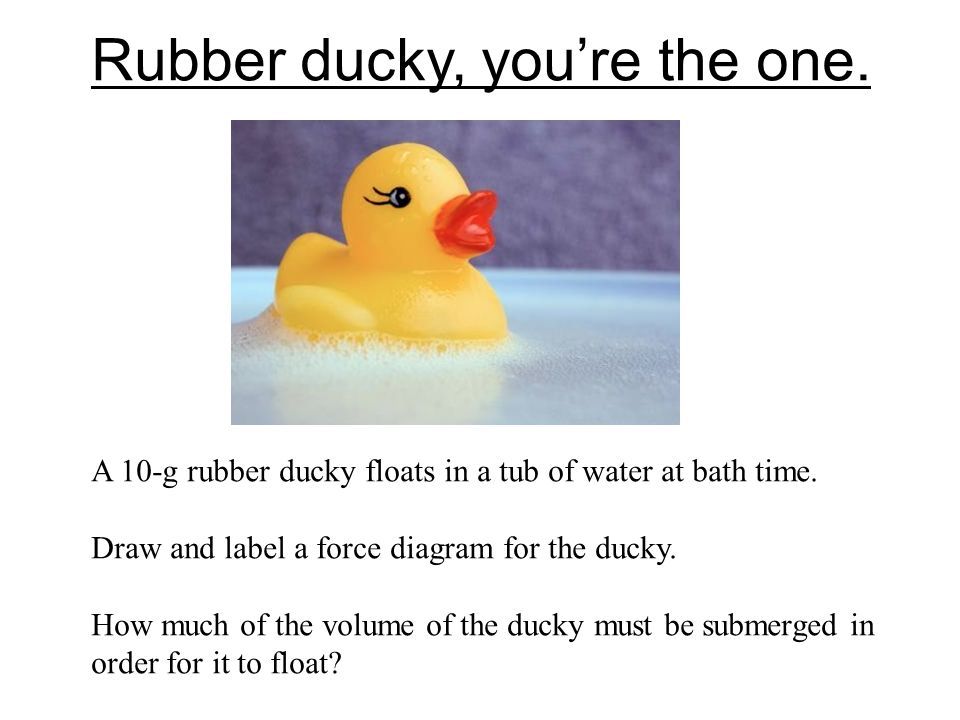 Rubber ducky, you’re the one.
A 10-g rubber ducky floats in a tub of water at bath time. Draw and
label a force diagram for the ducky. How much of the. -
Rubber ducky, you’re the one.
A 10-g rubber ducky floats in a tub of water at bath time. Draw and
label a force diagram for the ducky. How much of the. -
 A 55 g rubber duck is
floating in a tub of water | Chegg.com
A 55 g rubber duck is
floating in a tub of water | Chegg.com
rubber duck
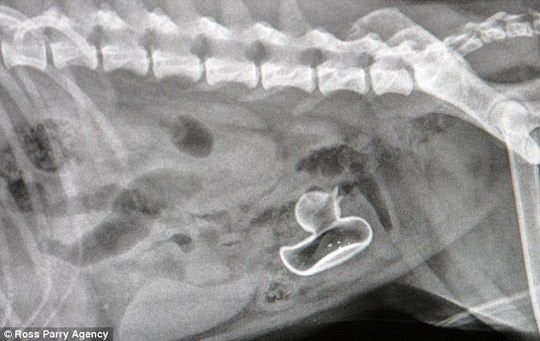 I see your
pregnant dog xray and raise you a rubber ducky dog xray : pics
I see your
pregnant dog xray and raise you a rubber ducky dog xray : pics
The ‘World’s Largest Rubber Duck’ is more than six stories high, 79 feet wide, 80 feet long and weighs over 30,000 pounds
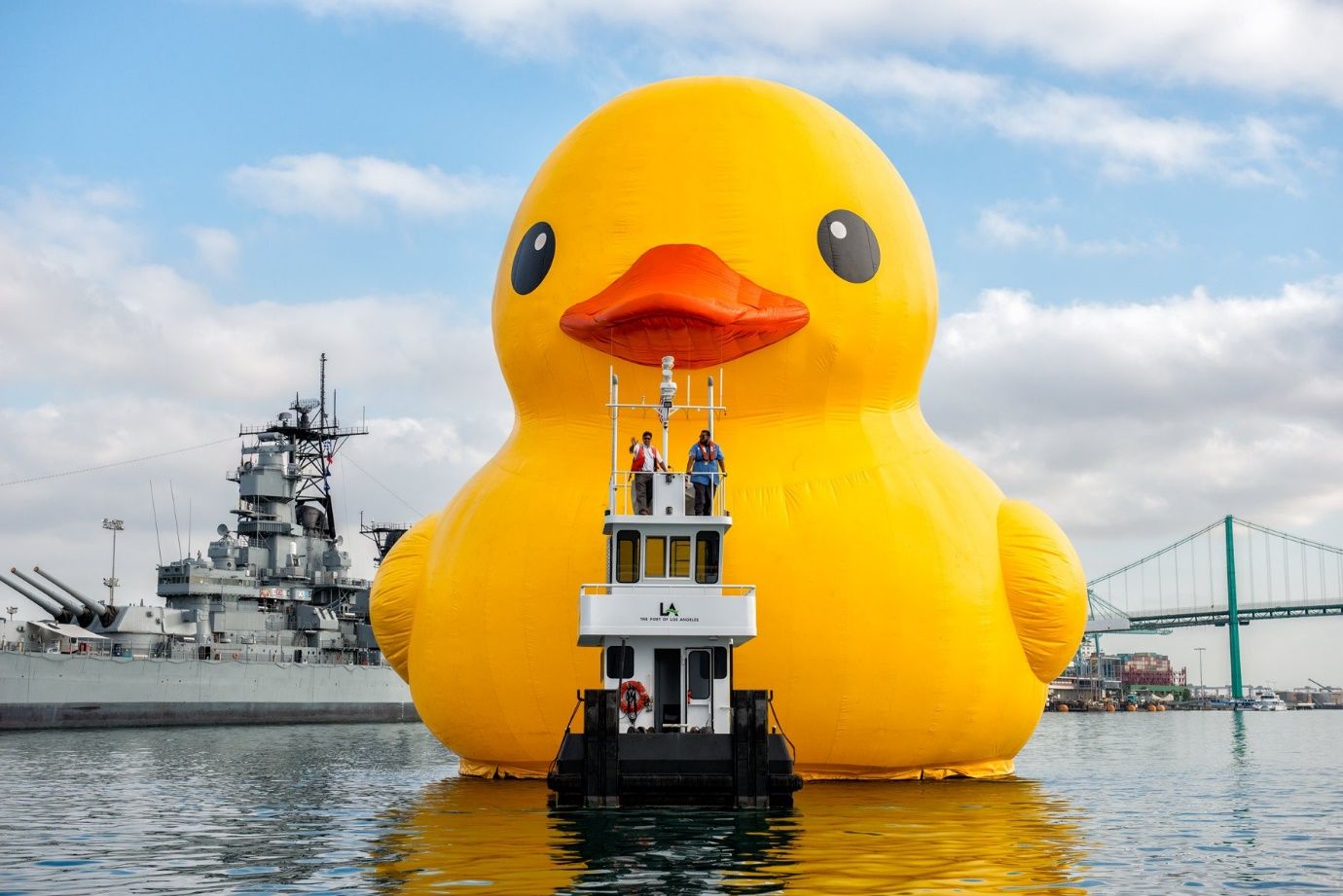
Wild ducklings, like these baby Mallard ducks, are in fact typically only partly yellow:
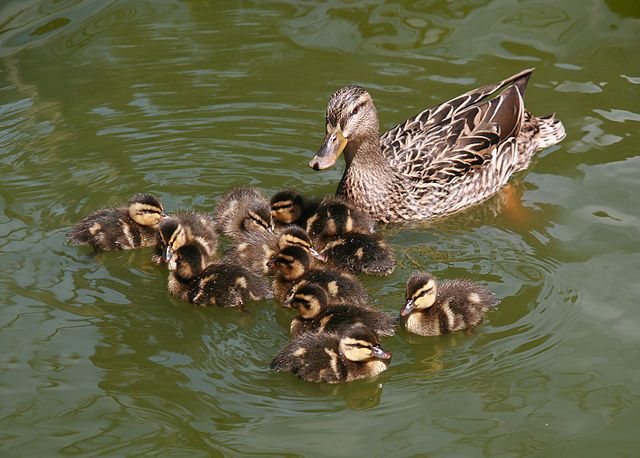 Picture
Picture
Photo by TheBrockenInaGlory via Wikimedia Commons, used under the CC-By-SA 3.0 license.
While I’m no expert, I would guess that the mottled yellow-brown coloring of the juveniles is, at least partially, protective coloration, just like the somewhat similar pattern on the adult female’s feathers. While it may appear conspicuous on open water, ducks in their natural habitat will often seek shelter among reeds and other vegetation, where the irregular pattern of light and shadow would create a very effective camouflage for the ducklings.
As for the all-yellow ducklings of domestic ducks, these presumably arose via elimination of the darker parts of the coloring as a result of selective breeding, perhaps as a side effect of artificial selection for the white adult plumage found in many domestic ducks today.
Specifically, according to a recent study of domestic duck genetics, it appears that the all-white plumage of domestic Pekin ducks is caused by a single recessive mutation to the MITF gene, which regulates melanin production. The mutation, when homozygous, causes the normal melanin production pathway in the skin to be almost entirely shut off, so that the adult plumage is pure white regardless of what other plumage color genes the bird may be carrying (a fact apparently known for a long time from cross-breeding experiments, even though the specific mutation behind this effect was not determined until recently).
Apparently, however, the yellow base pigmentation in young ducklings is not affected by the MITF mutation, and thus appears even in individuals homozygous for it. Presumably this is because the yellow color is produced via some other pathway, which is active in young ducks but gets shut off as they develop their adult plumage. The brown pigmentation pattern overlaid on top of it in wild-type ducklings, however, is controlled by MITF, and thus fails to appear in ducklings with two copies of the mutated version of the gene, leaving their juvenile plumage pure yellow.
As far as I can tell, the specific reason why the yellow pigmentation in ducklings is not controlled by the MITF gene still remains unknown. Or, if it is known, my Google search skills were not good enough to find it.
Center of mass
Colour/pigment
thermal mass
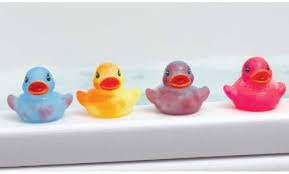
Insulation - down!